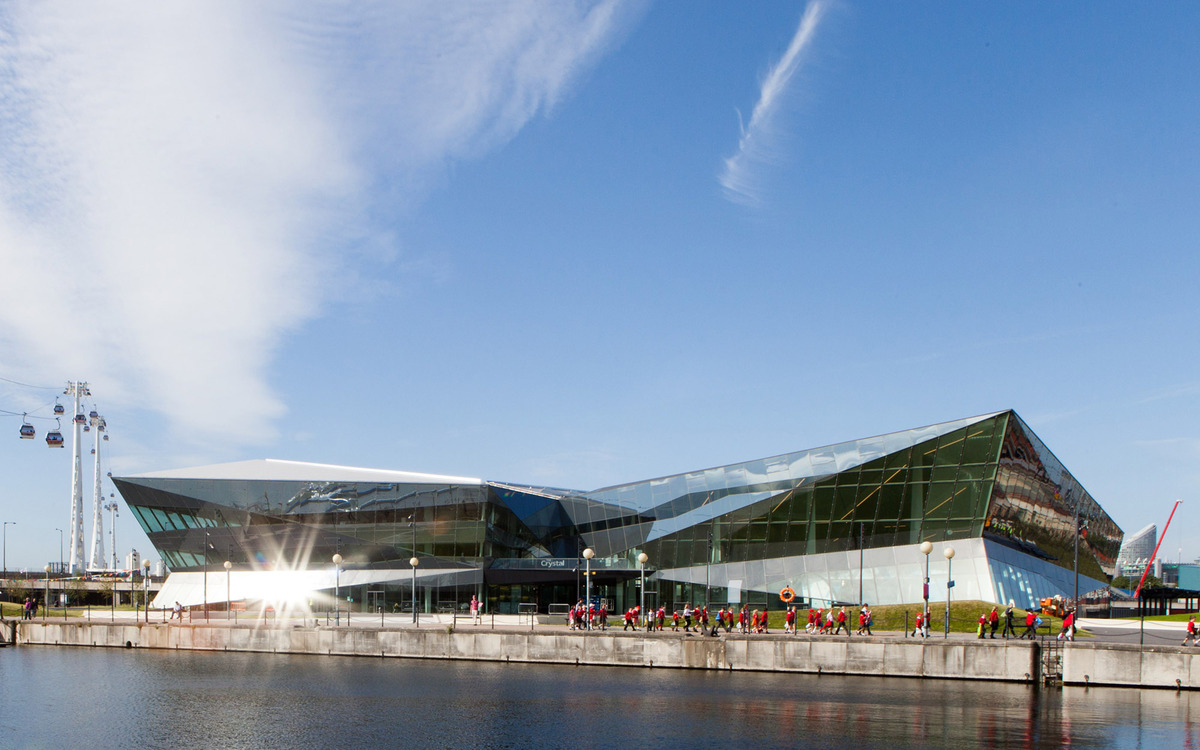In the era of smart construction and Internet of Things (IoT) connectivity, the importance of Environmental Management Systems (EMS) is growing. When building projects get more intricate, EMS in smart construction offers the foundation required to effectively control environmental consequences by integrating real-time data analytics and automation through IoT.
Throughout a project’s lifecycle, EMS plays a key role in smart construction by leveraging linked technology to optimize energy use, minimize waste, and guarantee regulatory compliance. This article examines the ways in which EMS in smart construction is enabling IoT-driven innovation to transform contemporary building processes, as well as the advantages and disadvantages of this innovative collaboration.
Table of Contents
Understanding EMS in Smart Construction
Adopting cutting-edge technology, such as the Internet of Things (IoT), artificial intelligence (AI), and big data analytics, to boost productivity and cut expenses is known as “Smart construction.” For such intricate projects, EMS in smart construction offers an organized approach to environmental sustainability. When it comes to smart construction, energy management systems (EMS) make sure that the technology utilized in infrastructure and buildings support environmental objectives like lowering carbon emissions, increasing energy efficiency, and earning sustainable certifications like BREEAM and LEED.
As construction organizations strive to conform to global sustainability requirements, the role of Environmental Management Systems becomes increasingly important. The most extensively used EMS standard, ISO 14001, is outlined by the International Organization for Standardization (ISO). EMS assists in monitoring and optimizing the environmental performance of automated systems and connected devices used in construction for IoT-driven projects.

How IoT Integration Enhances EMS in Construction
The incorporation of IoT, which enables real-time data collecting on energy use, material efficiency, and environmental implications, is one of the most important advancements in smart building. IoT-enabled Environmental Management Systems can continually monitor building processes by linking devices and systems, giving precise data that may be used to make quick adjustments. For example, sensors positioned on building sites are able to monitor energy usage and automatically modify systems to cut down on unnecessary energy use. By reducing resource waste, this not only guarantees improved environmental compliance but also helps save money.
Construction projects using IoT to support EMS in smart construction decreased operational inefficiencies by 30% and increased environmental compliance by 25%, per a McKinsey research from 2025. These enhancements highlight how IoT and EMS must work together to produce sustainable construction technology results.
Benefits of EMS in Smart Construction
Even with these difficulties, Environmental Management Systems offers a number of important advantages for IoT-driven smart building construction projects, including:
- Real-Time Environmental Monitoring: Energy use, emissions, and waste creation may all be tracked in real-time by EMS systems thanks to the Internet of Things, which enables prompt remedial action.
- Resource Optimization: By combining EMS and IoT, material and energy resources are used more efficiently, which lowers operating expenses and has a positive environmental impact.
- Enhanced Compliance: Projects comply with legal requirements and sustainable building certifications thanks to automated reporting and monitoring.
Because of these advantages, EMS is a must-have for businesses trying to maintain their competitive edge and meet the increasing demands of the industry on sustainability.
Suggested article to read: The Ultimate Guide to IoT Sensors in Construction (2025)
EMS and IoT in the London Crystal’s Construction

The Crystal in London: One of the greenest buildings in the world, The Crystal in London, is a great illustration of how EMS and IoT technology combine in contemporary construction projects. Siemens is the owner of the Crystal, which is fully powered by renewable energy and has received the highest certifications, including BREEAM Outstanding and LEED Platinum.
An advanced Environmental Management System (EMS) was combined with Internet of Things (IoT) technology to monitor and control a variety of environmental elements, including carbon emissions, water use, and energy use, in order to obtain these certifications. The building’s integrated sensors continuously gather information on water usage, HVAC in building, and lighting. The EMS may instantly make changes thanks to this real-time data, like lowering lighting in vacant spaces or increasing the energy efficiency of the HVAC system.
The Crystal demonstrated the useful advantages of combining EMS with smart construction technologies by reducing energy usage by 50% compared to standard office buildings by utilizing IoT technology for automated optimization and continuous monitoring. This project emphasizes the value of EMS in contemporary, data-driven building by demonstrating how IoT may help achieve net-zero energy and sustainability targets.
Challenges in Implementing EMS in Smart Construction Projects
Although there are many advantages to EMS and IoT integration, there are a number of implementation problems that must be overcome:
- Cost of Technology Adoption: Investing heavily in IoT devices, sensors, and data management systems is necessary for smart construction projects. This can be expensive, especially for small- and medium-sized construction companies.
- System Integration Complexity: It might be difficult to integrate different technologies in smart construction projects; to make sure that EMS frameworks and IoT infrastructure interact properly, specific knowledge and software are needed.
- Data Security and Privacy: Ensuring the security and privacy of the enormous volumes of data that IoT devices collect is becoming increasingly important. In order to safeguard environmental data from cyber attacks, EMS systems must have strong security mechanisms.

Conclusion
The role of EMS in smart construction is growing as companies increasingly adopt IoT-driven methods for better efficiency and sustainability. Through the provision of an organized framework for addressing environmental impacts, EMS assists construction projects in meeting net-zero objectives and legal requirements.
By providing real-time data insights and optimizing resource consumption, the integration of IoT further improves EMS and results in lower costs and better environmental performance. The collaboration between EMS and IoT will be even more important as smart construction advances in order to achieve sustainable and effective building practices in the contemporary day.
FAQs
What is EMS in Smart Construction?
- Answer: In smart construction, environmental management systems, or EMS, offer a framework for controlling and reducing environmental consequences while incorporating Internet of Things technology for continuous monitoring.
How does IoT Enhance EMS in Construction Projects?
- Answer: By offering real-time data on energy use, emissions, and resource efficiency, IoT improves EMS by facilitating quick adjustments and improved environmental compliance.
What are the Challenges of Implementing EMS in Smart Construction?
- Answer: The high expense of adopting IoT technology, worries about data security, and the difficulty of integrating EMS with various IoT systems are typical obstacles.
What are the Benefits of EMS in IoT-driven Smart Construction?
- Answer: Real-time environmental monitoring, enhanced regulatory compliance, and resource optimization—which lowers costs and has a less environmental impact—are among the advantages.
How do I Choose the Right EMS for a Smart Construction Project?
- Answer: Assuring interoperability with IoT systems, scalability for big projects, and compliance with industry standards like ISO 14001 and green building certifications are important factors to take into account.
Suggested article for reading:
Case Study: Top 4 Eco-Friendly Smart Building Construction Projects
The Future of Smart Construction; 2025 Review
Top 23 Famous Women Architects in World; 2025 Review
LCA in Building Materials: 5 Ways to Select Sustainable Options
The Role of PIM in Sustainable Construction (2025)
LCA and Carbon Footprint: 10 Effective Reduction Strategies
The Top 7 Green Architecture Projects
9 Smart Building Examples; 2025 Reviews
Resources:
Environmental Protection Agency (EPA) | International Organization for Standardization (ISO) | McKinsey & Company | U.S. Green Building Council (USGBC) | GreenBiz
For all the pictures: Freepik





